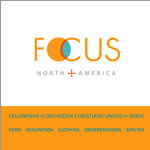The exhibit is well done and includes a number of explanatory notes that are faithful to Orthodox teaching on iconography. There are few probable misidentifications - mistaking St John Chrysostom for St John the Theologian - but overall, it was a delight. Also on display is a collection of Old Testament works by Marc Chagall.
As a companion to the display, please take the time to consider this thoughtful essay which recently appeared on the First Things website. The writer, an art historian named Matthew Milliner, takes very seriously the canonical tradition of iconography and hagiography, noting the ways various stylizations and embellishments contribute to - rather than detract from - the communication of the Truth through icons and accounts of the lives of the Saints.
Here's a sample:
On a trip to Crete last March to research onetime Venetian colonies, our class of twelve wandered into an Orthodox church in Chania. It was one of the many Cretan “double-nave” churches that, select art historians would argue, originated in Crete’s Venetian period, when both Orthodox and Latin services were sometimes held under the same roof. Within this tiny space, surrounded by icons, we found we were not alone. Joining us was a tall, stately Cretan; his sweater hung neatly over his shoulders. He spoke British English with the trace of a Greek accent and was eager to entertain questions.
We seized the opportunity and asked about a particular Cretan icon of Mary consoling the infant Christ. By this time most of us were seated, and our guide gave an impromptu lecture.
Mary was permitted, due to her wisdom, to study in the Temple from a very early age. Because of her access to Solomon’s mysteries, she knew what was to happen to her son. And so, as Gabriel confronts Christ in this icon with the instruments of the Passion, Mary comforts her son.
Sensing incredulity, he explained himself with a smile.
This story of the Temple is a myth, not in the sense of a lie, but in the sense of a code that must be decoded to get to the truth.
What first sounded like Dan Brown nonsense has proved itself a useful method for extracting value from so many curious historical accounts. As the French scholar Emile Mâle claimed, apocryphal tales “grew out of love and longing for more intimate knowledge of the life of Jesus and of all who were with Him,” and “under the trappings of legend the people’s insight almost always divined the truly sublime.” Whether or not Mary actually studied in the Temple is beyond the point. It is an apocryphal tale, but one that explores and amplifies a canonical truth: the mystery of the nativity and passion of Christ, whose historicity is not beyond the point.
To expect contemporary Christians to navigate this delicate terrain is much to ask. Either the entire sweep of the Creed is all just a beautiful story valuable only for the sentiment or action it can inspire (the thinner strands of narrative theology); or each detail, however insignificant, must be verified or discarded according to standards foreign to the biblical accounts (certain breeds of fundamentalism). G.K. Chesterton referred to the first error as the “aesthetics, or mere feeling, which is now allowed to usurp where it has no rights at all, to wreck reason with pragmatism and morals with anarchy.” The second he called “the temptation of the professors to treat mythologies too much as theologies; as things thoroughly thought out and seriously held.” I would not be the first to argue that both errors are two sides of the same Enlightenment coin: Refusing to accept that miraculous events can occur or submitting every distant detail of such events to dated standards of historical scholarship. Instead, Christian truth fulfills and transcends these shortsighted categories, containing what Hans Urs von Balthasar called “its own interior authenticity,” to which aesthetics and historicism need both submit...
Read it all here.


<< Home